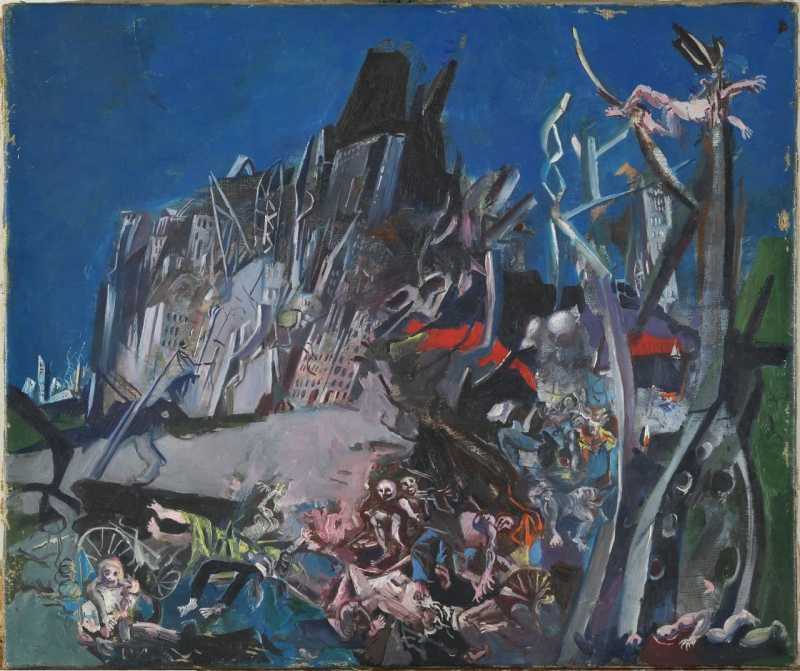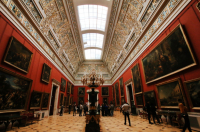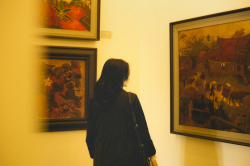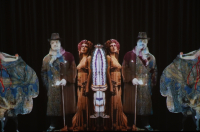Experts from ITMO’s Heritage Science Lab in collaboration with the staff of the Russian Museum have discovered a previously unknown painting by the German artist Werner Tübke hidden under the upper layer of paint of his other work, Hiroshima I. The hidden picture is a portrait of the artist’s father, Alfred Tübke.
While Hiroshima I is an expressionist work, the portrait under it is more academic in style, foreshadowing the style adopted by the artist later in his career. The discovery was made during the first laboratory analysis of the painting conducted at the Department of Technological Research of the Russian Museum.
The analysis itself was carried out at Mikhailovsky Palace using non-destructive optical methods, with the most significant results provided by infrared reflectography and radiography. Having uncovered a hidden painting, the researchers were able to identify it as a portrait of Werner Tübke’s father by comparing it to the artist’s other works.

Using infrared reflectography, the scientists were able to detect inconsistencies between the visible image (a) and the one hidden by a layer of paint and visible in the IR spectrum (b). The hidden painting contained elements of a portrait. Then, the experts took an X-ray of the painting, detecting the hidden image in full. Illustrations from the article
“Our research group comprised experts in technology and art, so we were able to run a contextual analysis of the painting, as well as study the related documents and iconographic sources. This interdisciplinary approach is just one example of using laboratory methods for historical analysis of artwork. Our research will be a part of the first major study of Werner Tübke’s works to be conducted in Russia, which will draw the notice of the Russian and international scientific community to the artist’s legacy,” explained Alexandra Smolianskaya, one of the paper’s authors and a researcher at the Russian Museum and ITMO’s Heritage Science Lab.
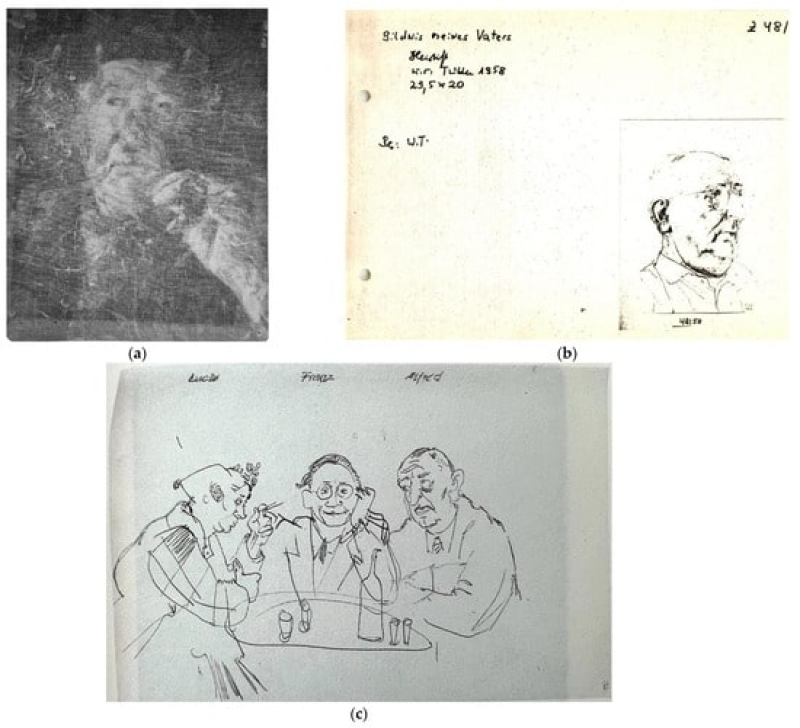
Radiography of Hiroshima I rotated 90 degrees clockwise (a); A portrait of my father. 1958 from a manuscript catalog of Werner Tübke, Panorama Museum Bad Frankenhausen (b); From the left to the right in Werner Tübke’s picture: mother Lucie, Franz and father Alfred (1952) (c). Illustrations from the article
Hiroshima I is the only painting of the artist known in Russia. It was given to the Russian Museum by collector Peter Ludwig in 1994. The painting was made by Tübke in 1958, in a period of his career when he turned away from modernist art in favor of a more figurative style. However, the painting itself is a modernist experiment more in line with the artist’s earlier works. You can find Hiroshima I on display in the Marble Palace of the Russian Museum (the Ludwig Museum at the Russian Museum).
Reference: Aleksandra Smolianskaia, Ivan Andreev, Sergey Sirro, Vladimir Aseev, Elena Tereschenko, Olga Smolyanskaya. In Situ Study of the Painting “Hiroshima I” (1958) by Werner Tübke (1929–2004) (Heritage, 2023).
